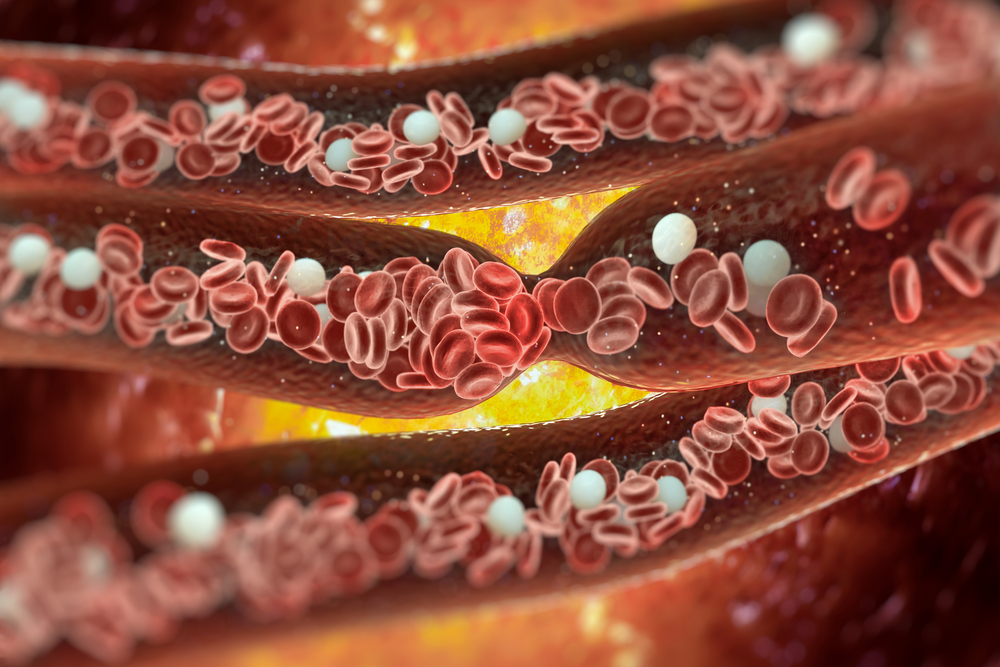 An international, multi-institutional research team led by Johns Hopkins Medicine Assistant Professor of Medicine and Biomedical Engineering and Assistant Professor of Medicine Hiroshi Ashikaga, M.D., Ph.D., has succeeded in developing a mathematical model capable of measuring and digitally mapping the electrical flow between heart cells that sustains the vital organ’s beat.
An international, multi-institutional research team led by Johns Hopkins Medicine Assistant Professor of Medicine and Biomedical Engineering and Assistant Professor of Medicine Hiroshi Ashikaga, M.D., Ph.D., has succeeded in developing a mathematical model capable of measuring and digitally mapping the electrical flow between heart cells that sustains the vital organ’s beat.
The scientists say their work could form the foundation of a blueprint for development of vastly more precise imaging methods for capturing cell-to-cell communication and pinpointing the clusters of tiny cells found at the epicenter of complex, life-threatening arrhythmias. They note that imaging approaches such as they suggest would enable precision-targeted, minimally invasive treatments for the purpose of eliminating rhythm-disrupting hotspots in the heart’s electrical system.
The human heart muscle is constituted by up to 5 billion cells loosely linked together by junctions that carry electrical signals from one cell to the next than when functioning properly is a perfectly synchronized process that results in a normal heartbeat. However at times, electrical signal propagation malfunctions due to an anatomic “roadblock” in the heart muscle such as scarring caused by a heart attack, which can induce electrical malfunction.
Most of the time the misfiring cells can quickly self-correct and restore functional electric flow. But in some such incidents, the aberrant signal can spread into neighboring cells causing more heart rhythm disturbances, which can be serious to life-threatening.
Two types of arrhythmias — atrial fibrillation and ventricular fibrillation — pose the greatest risk to health. Atrial fibrillation, affecting six million Americans, can result in formation of blood clots and stroke, and occurs when the heart’s upper chambers start beating chaotically. Ventricular fibrillation, a frequently-lethal rhythm disturbance that causes 150,000 cardiac arrests annually in the U.S., occurs when the heart’s lower chambers’ normal pumping activity degenerates into weak, fitful beats.
The Ashikaga team’s innovative approach, which was published online March 4 in the Open Access Journal of the Royal Society Interface, is inspired by a technique called information theory and builds on the premise that cell-to-cell interaction follows the classic communication model of source, transmitter and receiver. With their new model, the research team mapped cellular information flow by creating computer representations of normal and abnormal heartbeats. These ranged from simple benign arrhythmias with well-defined epicenters to dangerous rhythm disruptions that manifest in multiple hotspots.
By translating cellular conversations into digital form, the scientists were able to digitize the electric flow by converting electrical signals transmitted by cells into the zeroes and ones that are the basic units of information in computing and digital communications that can be easily read and imaged by a computer, which can help detect the communication breakdowns in that form the epicenters of the above-noted dangerous cardiac rhythm disturbances.
The paper, entitled “Modelling the heart as a communication system“ (Published 4 March 2015 DOI: 10.1098/rsif.2014.1201) coauthored by Hiroshi Ashikaga, Jos Aguilar-Rodrguez of the University of Zurich; Shai Gorsky of the University of Utah; Elizabeth Lusczek of the University of Minnesota; Flavia Maria Darcie Marquitti of the University of So Paulo, Brazil; Brian Thompson and Degang Wu of the Hong Kong University of Science and Technology; and Joshua Garland of the University of Colorado; notes that electrical communication between cardiomyocytes can be perturbed during arrhythmia, but these perturbations are not captured by conventional electrocardiographic metrics. To address this, the researchers developed a theoretical framework to quantify electrical communication using information theory metrics in two-dimensional cell lattice models of cardiac excitation propagation. They also used mutual information to perform spatial profiling of communication during cardiac arrhythmia events, finding that information sharing between cells was spatially heterogeneous. In addition, cardiac arrhythmia significantly impacted information sharing within the heart.
The team concludes that information theory metrics can quantitatively assess electrical communication among cardiomyocytes, and that their results suggest the heart as a communication system is more complex than the traditional concept of functional syncytium-sharing electrical information via gap junctions and can’t predict altered entropy and information sharing during complex arrhythmia. Therefore they maintain that information theory metrics may find clinical application in the identification of rhythm-specific treatments currently unmet by traditional electrocardiographic techniques, and affirm the belief that this new paradigm provides a new set of tools for the systems-approach to the heart as a complex system.
“Successful arrhythmia treatment depends on correctly identifying the epicenter of the malfunction,” explains Dr. Ashikaga. “We cannot begin to develop such precision-targeted therapies without understanding the exact nature of the malfunction and its precise location. This new model is a first step toward doing so.”
Noting that at the heart of their new model is the concept of heart muscle cells functioning as analog-to-digital converters, gathering information from their surroundings, converting or interpreting the information, then retransmitting the message to neighboring cells. Dr. Ashikaga and his colleagues maintain that capturing and quantifying information during cell to cell transmission can help intercept aberrant signals or in this paradigm — communication breakdowns — as they trigger the electrical firestorms that make the heart to lapse into beat abnormalities that compromise its blood pumping ability.
The scientists observe that pinpointing the location of these communication glitches has been notoriously challenging using standard electrocardiograms, or EKGs, which provide only limited information and are of the most use in diagnosing arrhythmia types rather than the exact cellular origin of rhythm disturbances.
Different types of arrhythmias generate clearly distinct spatial profiles, while with regular EKG tracings, the same rhythm disturbances looked similar to an assortment of overlapping features, suggesting that quantification and digitizing of information flow inside the heart would be afar more reliable method of distinguishing various forms of arrhythmia from one another.
Current therapies used with dangerous heart rhythms, including medication, catheter ablation or implanted defibrillators that shock the heart back into normal rhythm, are not always effective or can have serious downsides. However, being able to pinpoint the origin of dangerous arrhythmias in real time could lead to new therapies and improve precision of surgical ablation, a minimally invasive procedure that uses heat energy to burn hotspots that trigger aberrant rhythms. Ablation works especially well with simple rhythm disorders that have well-defined hotspots, but has proved far less effective in addressing complex arrhythmias originating from multiple hotspots that standard imaging techniques can’t precisely locate.
Sources:
Johns Hopkins Medicine
Journal of the Royal Society Interface
Image Credit
Johns Hopkins Medicine


